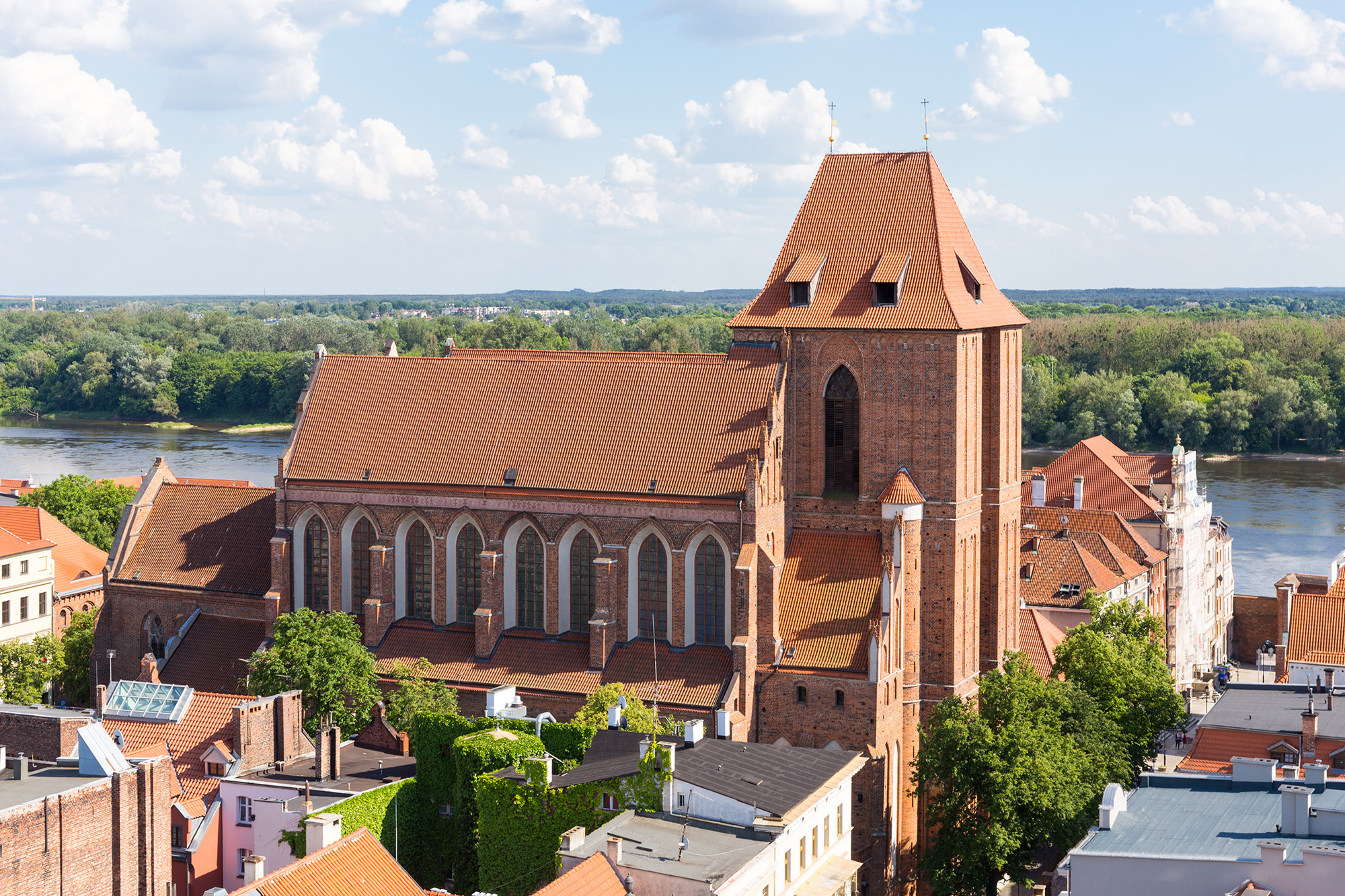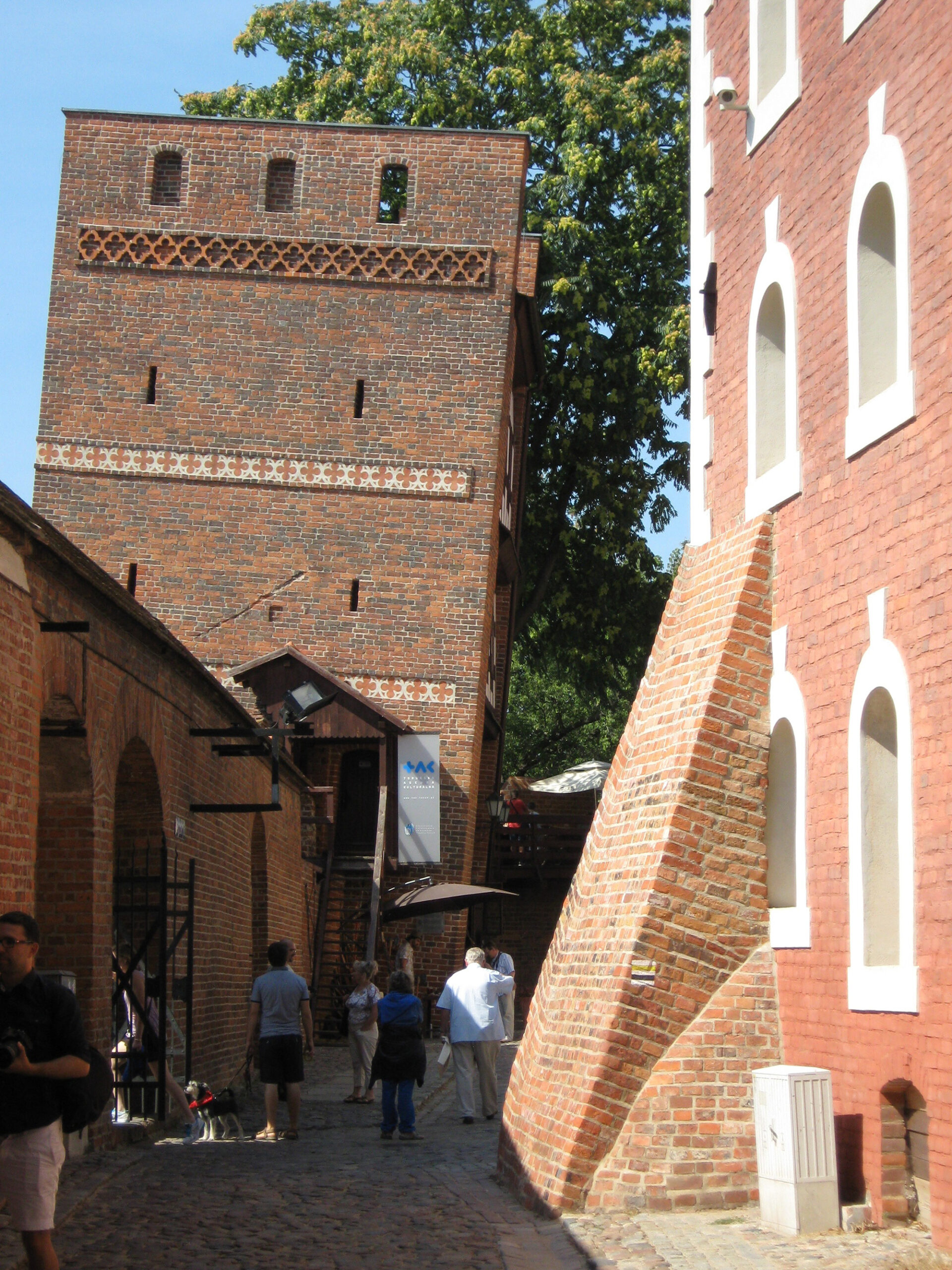Table of Contents
About
Toruń is located on the right bank of the Vistula river, near the geographic center of Europe, in north-western Poland. While the city is best known for being the birthplace of astronomer Nicolaus Copernicus, there is a lot more to Toruń that makes it worth visiting. In fact, Polish people refer to Toruń as “Krakow of the North” because of its rich historical and cultural heritage.
As a city that was founded and ruled by Teutonic Order of Knights for hundreds of years, Toruń enjoyed economic prosperity in the Middle Ages, which is evidenced by its distinctive Gothic architecture still standing today despite the city’s tumultuous history. The city’s medieval Old Town’s importance is highlighted by the fact it was declared a UNESCO World Heritage Site in 1997.
Continuing the legacy of Copernicus, Toruń is also recognized as a seminal place for science, boasting one of the oldest universities in the country and a state-of-the-art planetarium.
Beyond that, the natural beauty of the city is unparalleled, given its proximity to the Pomeranian Lakeland with its extensive forests and hundreds of lakes, making Toruń a spectacular city with a lot to offer.
History and Culture
Not unlike the rest of Poland, Toruń has a tangled history. The city was founded in 1233 by an order of German knights who ruled parts of the Baltic, known as the Teutonic Knights. Due to its strategic location on the Vistula river, it became part of the Hanseatic League, an alliance of German and Baltic ports which dominated trade in the region, and it prospered economically in the Middle Ages. Toruń’s most important buildings, such as the Old Town Hall and its churches, date back to this period.
The end of the rule of the Teutonic Knights was followed by many periods of turmoil, including a brief occupation by the Swedes, a Protestant Reformation that swept across Europe and divided the city between Protestants and Catholics culminating in the Tumult of Toruń in 1724 and falling under Prussia and Germany’s rule. Toruń, however, rose to these challenges and became the home of secret organizations dedicated to the restoration of Poland against the Prussians and the revolutionary publication, Gazeta Toruńska. As such, it became a center of resistance and synonymous with the Polish independence movement.
While the Second World War brought devastation to many cities in Poland, Toruń’s historic buildings managed to escape damage and the city grew to be a significant hub of industry in the mid-20th century, specializing in producing artificial fibres. Today, the city is flourishing: It is home to one of the best universities in Poland and its main industry is tourism. Visitors to the city will be able to enjoy its rich and unique culture, resulting from an amalgamation of influences due to its colorful history. In particular, Toruń is famous for its trademark gingerbread, the spicy scent of which has been permeating the city’s streets from the Middle Ages to today. The city is also considered to be the home of science, dedicating museums, monuments and numerous exhibitions to the work of legendary astronomer Copernicus.
Things To Do in Toruń
Old Town Hall

The Old Town Hall was built under the order of the Teutonic Grand Master Conrad von Wallenrode in the late 14th century. The building’s brick Gothic structure, peppered with ornamental Renaissance touches, serves as one of Europe’s finest examples of secular medieval architecture. Having remained relatively undamaged throughout the city’s turbulent history, the Old Town Hall’s size and grandeur are reflective of Toruń’s prosperity during the Middle Ages. Once the administrative and commercial hub of the city of Toruń, today the Old Town Hall houses the District Museum, where one can admire Gothic art and a collection of medieval and modern crafts and Polish paintings. Visitors can enjoy a stunning panoramic view of the city’s Gothic townscape from the clock tower on top of the building.
Cathedral of St. John

A late Gothic architectural wonder, the construction of which was initiated in the mid-13th century and lasted two hundred years, the Cathedral of St. John was the most important church in Toruń during the Middle Ages. Pope John Paul II acknowledged the historical importance of the church in 1992 by classifying it as a ‘basilica’. Today, the cathedral’s spacious baroque interior is filled with exquisite works of sacral art, from Gothic and medieval paintings to stain-glassed windows. Visitors to the cathedral will have the opportunity to see unique artifacts, such as Nicolaus Copernicus’ baptismal font and the magnificent Tuba Dei (God’s Trumpet) bell, weighing over 7 tons. For a truly immersive experience, visitors can also attend a mass service.
Teutonic Castle Ruins

East of the Old Town lies the Toruń Castle, which was built in the 13th century to serve as a base for the Teutonic Knights. Even though the castle was largely demolished during the 1454 uprising against the Teutonic Order, its remains have been turned into a historical monument. Today, visitors to the castle can explore its preserved parts which include a former lavatory tower that which from 16th to 18th century was used as gunpowder storage depot from the 16th to the 18th century and the cellars. The permanent exhibits are designed to give visitors an insight into the Teutonic Knights’ daily routines, in what can be described as an educational experience.
Muzeum Piernika

Muzeum Piernika, otherwise known as “The Living Museum of Gingerbread”, is housed in a reconstructed Renaissance bakery in the center of Toruń. Dedicated to Toruń’s most celebrated delicacy, the museum aims to educate visitors about the history and tradition of baking gingerbread, which dates back to medieval times. The museum features a range of interactive exhibits and an impressive collection of original machinery and traditional wooden molds, guaranteed to wow visitors. Visitors with a sweet tooth will also relish the opportunity to learn how to make and decorate their own spicy gingerbread under the guidance of skilled local bakers.
Leaning Tower of Toruń

One of the most important landmarks of the city, the Leaning Tower of Toruń is a fortified medieval tower built in late 13th century for defence purposes. As its name suggests, it is a curious architectural work: the top of this red-brick tower slants to the side at a 1.5-meter tilt due to the instability of the underlying ground. Throughout Toruń’s history, the tower has been used for many different purposes, even being converted to a women’s prison at one point in the 18th century. Today, it houses a picturesque café that visitors can relax at after learning all about the folkloric myths surrounding this legendary building.
Toruń Planetarium

A visit to Toruń, the hometown of Copernicus, would not be complete without a visit to the Planetarium. First opened in 1994, the Planetarium is located in the Torun center in a converted Gothic gas plant which is considered a fascinating example of 19th century industrial architecture. The Planetarium in Toruń is the most technologically advanced in Poland and features the largest and most sophisticated telescope and projector the country, which visitors can use to explore a scope of astronomical knowledge before enjoying a variety of educational exhibitions regarding the universe.
How to get to Toruń
By Air – While there is a Toruń airport, it does not serve many flights at the time being. The nearest airports to fly into are the following: Bydgoszcz (52 km), Poznań (150 km), Gdańsk (170 km) and Warsaw’s Modlin (175 km) and Chopin (210 km) airports.
By Train – Visitors can travel by train to Toruń Główny, the city’s central railway station, from almost any Polish city using Polish Railways.
By Bus – Travellers can use the A1 motorway, which connects Toruń to most major cities in the north and south of Poland. There are regular coach services operated by companies like Flixbus that connect Toruń to many domestic and European cities in Germany, Belgium, the Netherlands, England, France, Norway and Italy.
